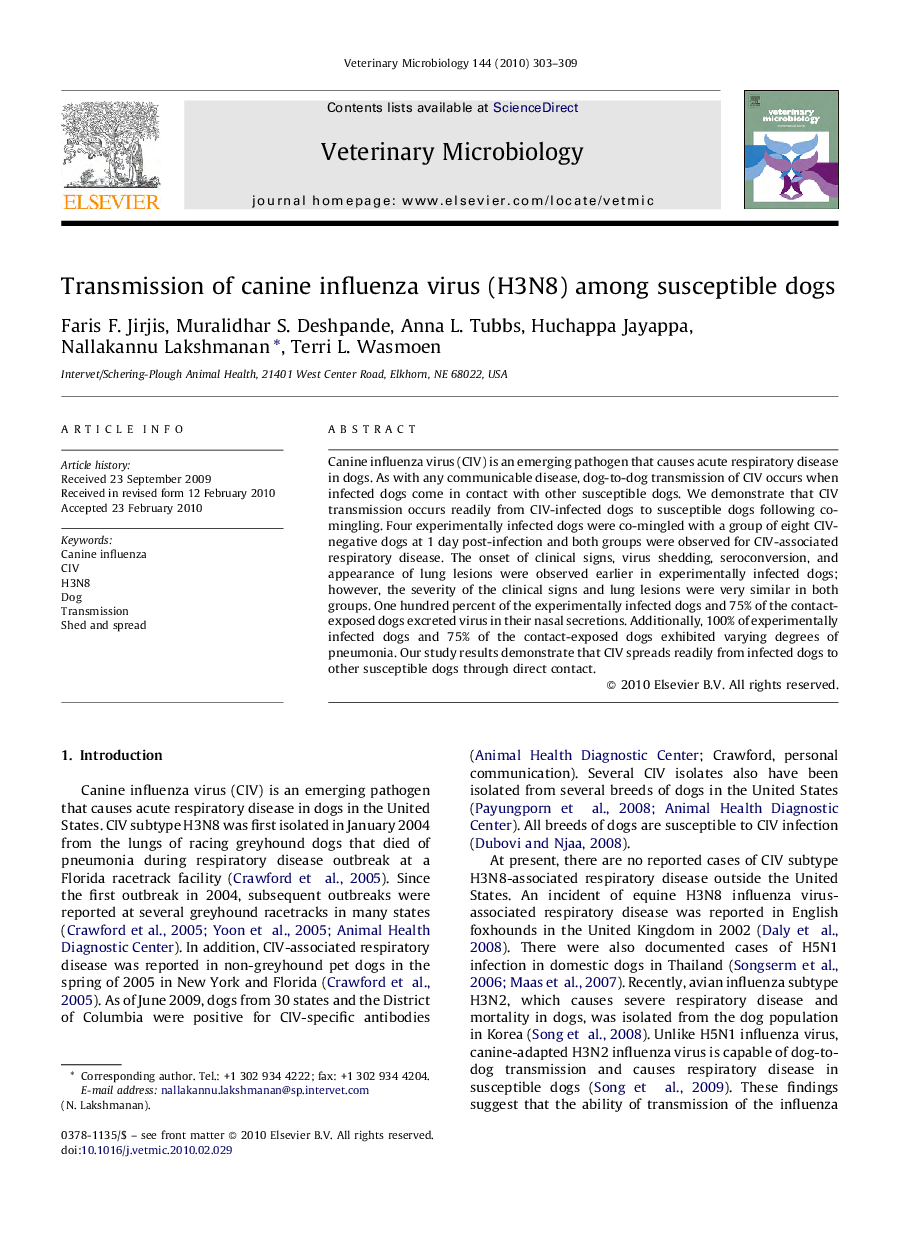| Article ID | Journal | Published Year | Pages | File Type |
|---|---|---|---|---|
| 2468018 | Veterinary Microbiology | 2010 | 7 Pages |
Canine influenza virus (CIV) is an emerging pathogen that causes acute respiratory disease in dogs. As with any communicable disease, dog-to-dog transmission of CIV occurs when infected dogs come in contact with other susceptible dogs. We demonstrate that CIV transmission occurs readily from CIV-infected dogs to susceptible dogs following co-mingling. Four experimentally infected dogs were co-mingled with a group of eight CIV-negative dogs at 1 day post-infection and both groups were observed for CIV-associated respiratory disease. The onset of clinical signs, virus shedding, seroconversion, and appearance of lung lesions were observed earlier in experimentally infected dogs; however, the severity of the clinical signs and lung lesions were very similar in both groups. One hundred percent of the experimentally infected dogs and 75% of the contact-exposed dogs excreted virus in their nasal secretions. Additionally, 100% of experimentally infected dogs and 75% of the contact-exposed dogs exhibited varying degrees of pneumonia. Our study results demonstrate that CIV spreads readily from infected dogs to other susceptible dogs through direct contact.
